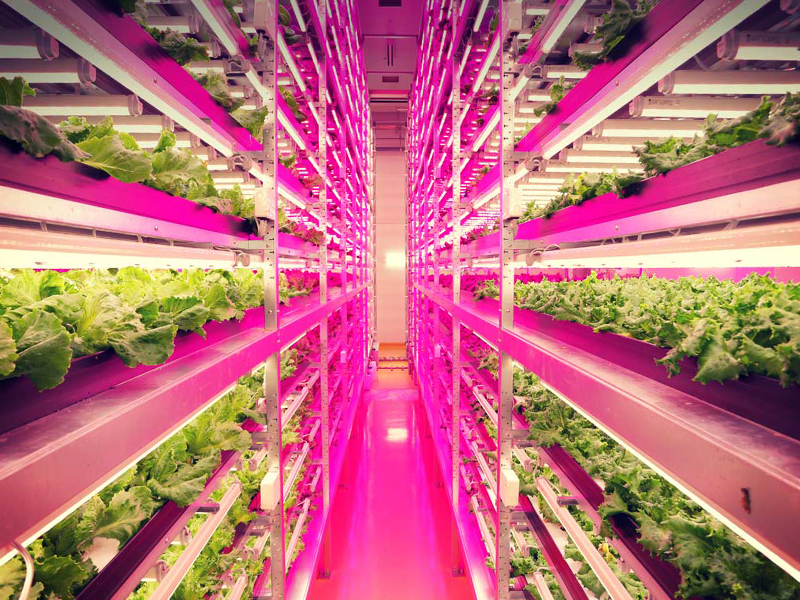World’s Largest Indoor Farm is 100 Times More Productive
There have been many proposals for urban farms, especially high-rise and/or fully enclosed and artificially climate controlled. Most have been entirely fanciful, supported by tenuous claims of efficiency, and have generally invited adverse comment based on equally speculative evidence. A few have been small scale demonstration projects, typically concentrating more on the feel good message, than on commercial viability – like the tastefully displayed boutique growing facility embedded in the K11 ‘Art Mall’ in Shanghai.
But to convey credibility as a proof of concept, there is nothing like an actual working prototype, funded by a private individual and holding its own in the marketplace. So with a title like that above, the article in webUrbanist is sure to make you look twice. To quote:
The statistics for this incredibly successful indoor farming endeavor in Japan are staggering: 25,000 square feet producing 10,000 heads of lettuce per day (100 times more per square foot than traditional methods) with 40% less power, 80% less food waste and 99% less water usage than outdoor fields.
If you are inclined to be negative, you would notice the absence of a headline energy budget – and you would jump to the conclusion that it is likely to be very unfavourable. I actually don't know why a properly constructed energy budget is not published, except that 'properly constructed' is a very innocent way of saying it's devilishly difficult.
I am increasingly inclined to the view that a well conceived facility can be easily demonstrated to be dramatically energy-efficient compared to the traditional system of farming and food supply logistics. I make that argument in my previous post about the K2 farm in a mall. It all hinges on the obscene proportion of energy conventionally used to transport food to our door, whereas a facility such as that co-developed in this enterprise by Shigeharu Shimamura, can supply fresh local produce right where it's needed. But no small part of the need to rethink the likely merits of controlled environments for farming, is also the dramatic advance in the technologies of LED lighting. It's counter-intuitive, but the inefficiencies of converting available primary sources of power into light provided by LEDs appear to be more than compensated by the ability to timeshift and selectively tweak the wavelengths of the light. In this instance, customized LED lighting developed with GE helps plants grow up to two and half times faster.
It might offend those who prefer to think that a return to sustainable population numbers, supported by traditional agriculture, is the better long-term option. But in the immediate term, this particular enterprise might be pointing us in the direction where technology does indeed help to solve the problems of our current dangerously over-exploited natural systems.
Actually, the story of this particular enterprise is almost romantic, but also an embodiment of a number of the sustainability principles about which I have been writing in this blog. As reported, the idea to turn a former semiconductor factory into the planet’s biggest interior factory farm at this time and in this place grew out of a disaster: the 2011 earthquake and tsunami in northern Japan, causing area food shortages in general and this building to be abandoned in particular. Turning it into an indoor farm both gave the structure a new purpose and with the region's farmland contaminated by radiation, has helped replace needed fresh, healthy and locally-grown greens. By the time you give due weight to the reductions in water use and waste generation, the sustainability story starts to make considerable sense. Not surprisingly, a new facility using the same technologies has been announced and is now under construction in Hong Kong, with Mongolia, Russia and mainland China also interested.
- The webUrbanist article can be accessed here, but the same original press release has been picked up by a number of other sites. Google is your friend. To form a better idea more generally of urban agriculture, it might be helpful to start with:
- Japan’s Urban Agriculture: Cultivating Sustainability and Well-being, a United Nations University article. Click here.
- Follow up with the slightly breathless populist Inhabitat article Rooftop Farms on Japanese Train Stations Serve as Community Gardens here.
- (Edit) Better still, read Underground and on rooftops, farms take root in big cities in the Christian Science Monitor. Not your usual orgy of images, but rather a serious article with lots of further links. Click here.

No comments:
Post a Comment